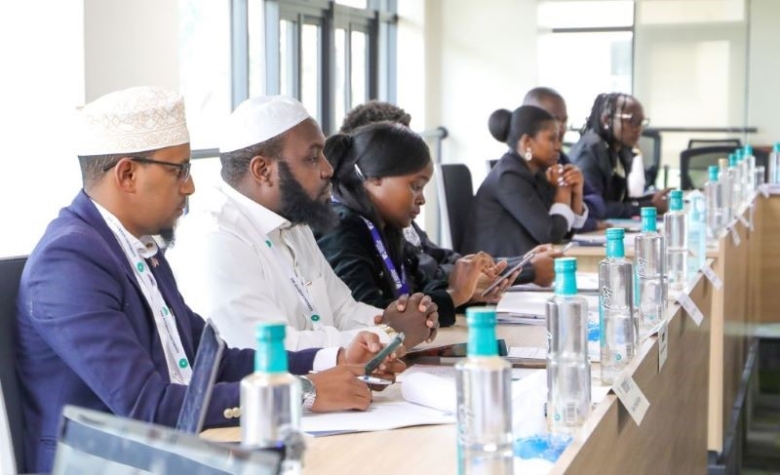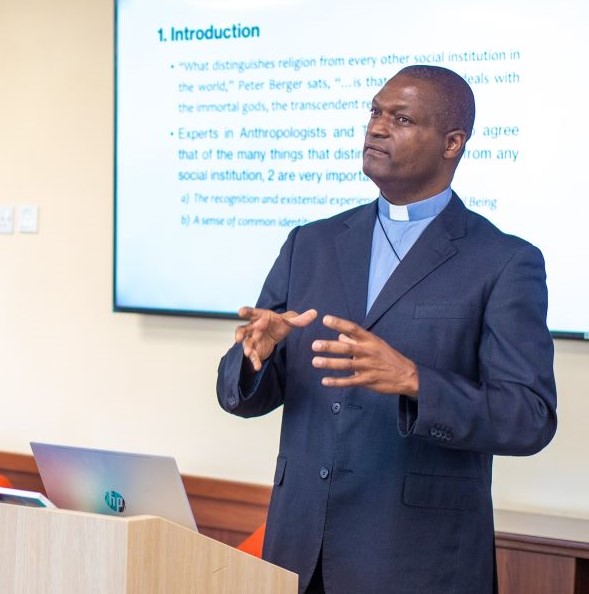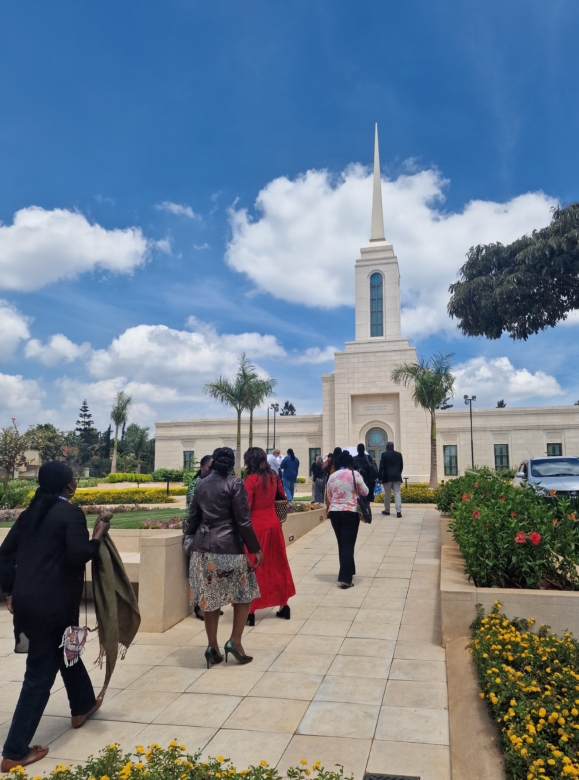The Sacred Responsibility: Reimagining Religion Journalism in Africa

NAIROBI—In a continent where the call to prayer mingles with the beat of drums, where cathedrals rise beside sacred groves, and where faith shapes lives with quiet profundity, a group of journalists gathered in April to confront a pressing question: How do we tell the story of religion in Africa without fracturing its fragile peace?
The international conference “Reporting Religion in Africa – Rising to the Challenge”, hosted by the Aga Khan University’s Graduate School of Media and Communications (GSMC), the International Association of Religion Journalists (IARJ) and the Konrad Adenauer Stiftung KAS Media Africa, was not merely a symposium. It was a reckoning—a call to arms for African journalists to navigate the minefield of faith reporting with nuance, empathy, and courage.
The African Paradox: Coexistence Amid Complexity

Dr. Andrew Kaufa, Coordinator of the department of Social Communications of the Association of Member Episcopal Conference in Eastern Africa (AMECEA) – Photo credits to KAS
Africa is a big theatre of belief. Christianity, Islam, and traditional spiritual systems intertwine, often harmoniously, yet their stories are too often reduced to headlines of conflict or caricature. “We report on Boko Haram but ignore the imam and pastor sharing tea in Lagos. We amplify hate speech but mute interfaith marriages,” noted Dr. Andrew Kaufa, Coordinator of the department of Social Communications of the Association of Member Episcopal Conference in Eastern Africa (AMECEA). Religion here is life itself—a force that binds communities, drives politics, and heals wounds. Yet, when mishandled, it becomes a spark in a tinderbox.
The conference laid bare the challenges: How does one contextualize the role of faith in youth protests in Kenya? How does a reporter disentangle witchcraft accusations from mental health crises in Malawi? How do we cover Pentecostal megachurches without fueling stereotypes? Religion journalism, participants agreed, demands more than facts—it requires soul.
The Journalist as Peacebuilder
The gathering’s most profound insight was its redefinition of the journalist’s role. “We are not stenographers of dogma,” argued the KAS Media Programme Director Hendrik Sittig. “We are bridge-builders.” Sessions emphasized accuracy — not just of doctrine, but of lived experience. Rwuandan reporter Annonciata Byukusenge shared how misquoting a Quranic verse nearly incited violence in her town. South African colleague Cailan Ferreira Mokoka confessed her past reliance on “experts” from abroad, rather than local voices.
Empathy emerged as the conference’s lodestar. “Walk in the muezzin’s shoes,” IARJ journalists speaking in the panel Global perspectives on reporting religion. “Sit with the herbalist before labeling her a ‘witch.’” This ethos was embodied as participants shared perspectives on the practice from their regions.
The Machinery of Change
The conference’s architects—GSMC, IARJ, and KAS—brought distinct strengths. GSMC, a hub of media innovation, pushed for “solutions journalism,” framing religion as a catalyst for social good. The IARJ, with its global network, shared tools for navigating blasphemy laws and interviewing trauma survivors. KAS, meanwhile, anchored the dialogue in democracy: “No free society survives without a press that understands its sacred spaces,” Hendrik Sittig declared.
Critically, the event prioritized youth. Early-career journalists from Kenya who will cover a religious riot, interview a cult leader, decode state-sponsored faith propaganda. “I used to see religion as a ‘soft’ beat,” several Kenyan Journalists admitted. “Now I see it’s where Africa’s future is written.”
A Roadmap for the Soul
The conference ended not with a manifesto, but a challenge: Will African media rise to become stewards of spiritual storytelling? The stakes are existential. With extremism rising, elections swayed by pulpits, and traditional beliefs clashing with modernity, journalists must choose—will they be amplifiers of division or architects of understanding?

Photo credits to Elisa Di Benedetto
This is not idealism. It is survival. As Professor Nancy Booker, the GSMC’s dean, noted, “When we report on religion poorly, we don’t just get the story wrong. We fracture societies.” But when we do it right—when we marry rigor with reverence—we become midwives of a new Africa: one where faith is neither weaponized nor whitewashed, but woven into the continent’s unfolding narrative.
In the shadow of Nairobi’s skyscrapers, as participants exchanged contacts and vows to collaborate, one truth resonated: Religion journalism is no niche beat. It is the heartbeat of Africa. And its rhythm, now more than ever, must be reported with care.
Prince Charles Dickson Ph.D. is a media scholar and development worker
Edited by Elisa Di Benedetto
Related content
Way Forward for Religion Reporting in Africa: Impressions and Suggestions, The IARJ
Africa Religion Reporting Underfunded, Experts Say, The Aga Khan University
Whose faith makes news: The politics of religion in African media, by Joan Mbabazi for The New Times
